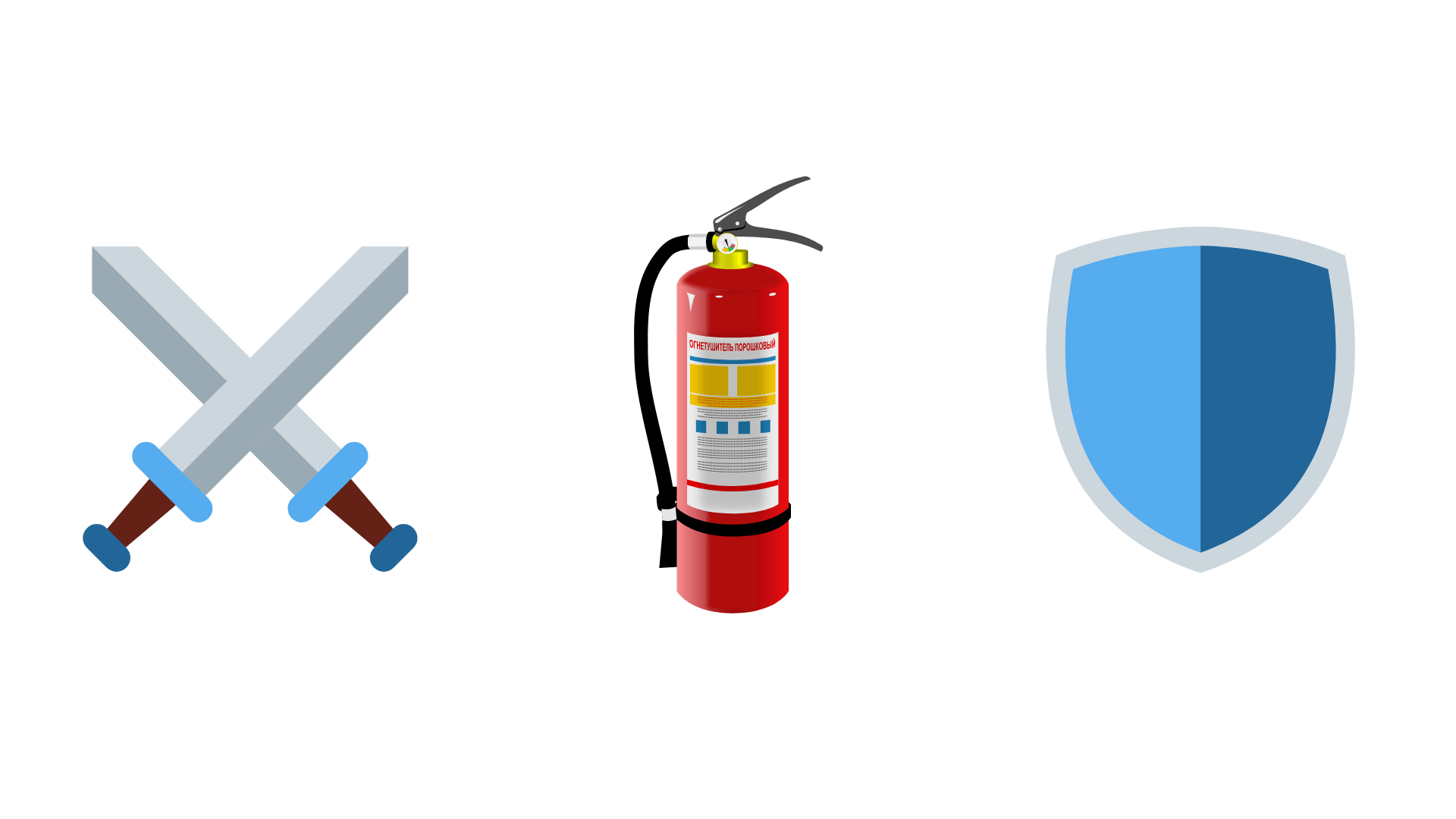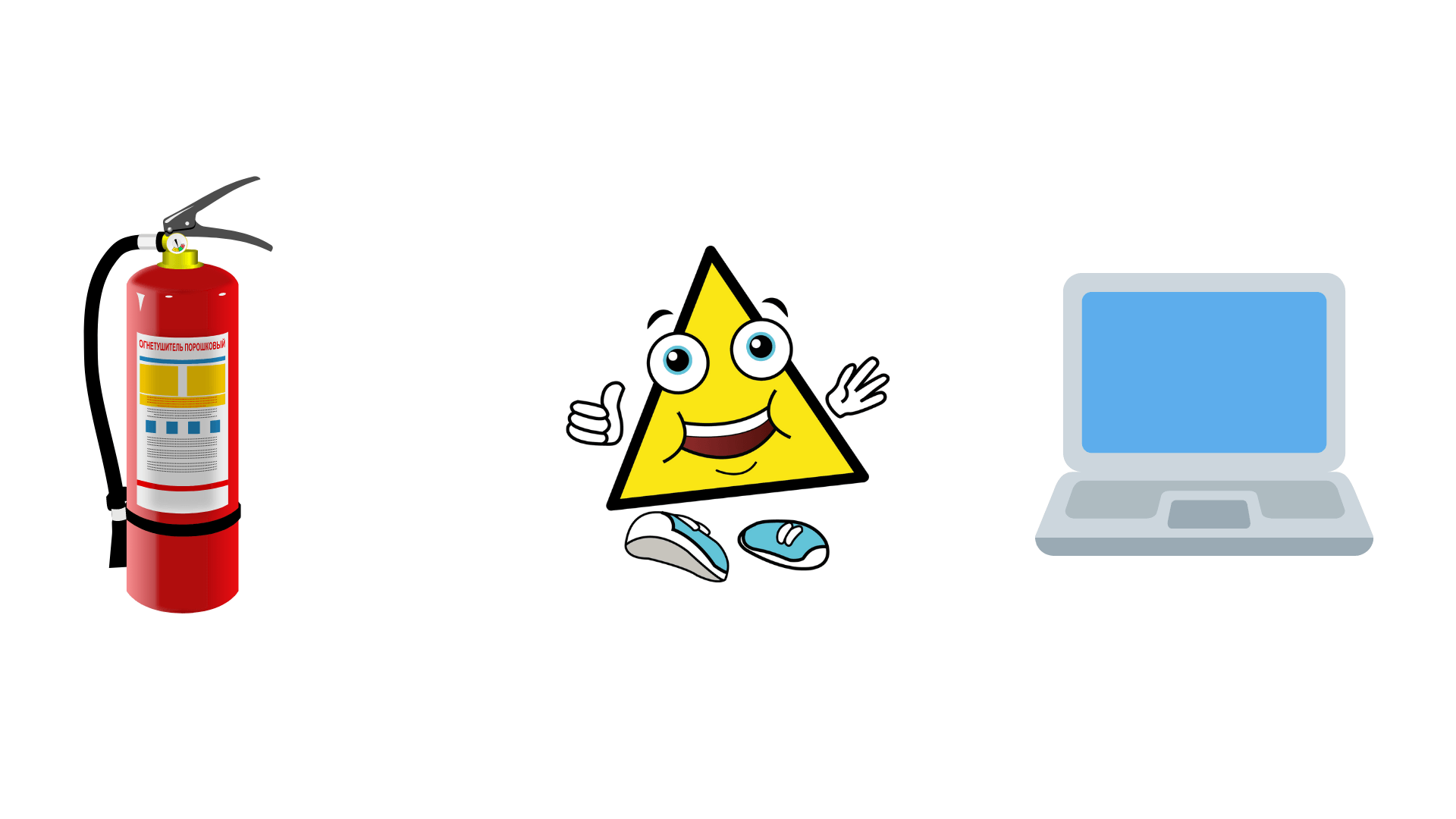In the event of a fire, fire extinguishers have two purposes. 
They will be used as a primary action to attack a fire in an attempt to put it out, or as a last line of defence in order to aid escape from a building.
The fire service will not use your fire extinguishers in the event of a fire, and only those that have been trained and have specific responsibilities relating to the use of firefighting equipment could be expected to use them.
As a first attack
When a fire is smouldering or in its early stages, it is a lot easier to extinguish. There is less heat energy available for the fire to use to break down fuel, and a quick application of a fire extinguisher could stop it in its tracks completely.
Most extinguishers will be quickly depleted when used, so using a fire extinguisher as a first attack will only work on a small fire, or smouldering embers.
There is also the possibility that you could make things much worse if you use the wrong type of fire extinguisher for the fire.
As a last line of defence
Fire can spread very rapidly throughout a building and if you are prevented from exiting a building by a fire, a fire extinguisher may be your last line of defence. It could extinguish or partially extinguish the fire in the exit area, allowing you to get to safety.
A fire extinguisher is not going to put out a large fire, but it can certainly help to buy some time in order to make an exit.
Understanding fire classification
Each fire extinguisher has a specific purpose or classification of fire that it is designed to extinguish.
Applying the wrong type of fire extinguisher to a fire can make the situation a lot worse.
If you use a water extinguisher on an oil or fat fire, the reaction between the water and the hydrophobic oil will cause the fire to spread out from the source, and can create a large fireball which has the potential to cause the fire to spread to other places.
This video by The Slow Mo Guys gives a great example of how this works.
Credit: The Slow Mo Guys on YouTube
Fire Extinguisher training
In order to use a fire extinguisher properly you will need training and where possible, practical experience with using a fire extinguisher.
Understanding the classifications, types of fires that are likely to occur on your site, and how they can be potentially fought with a fire extinguisher is essential for anyone that may need to use a fire extinguisher.
Who should have fire extinguisher training?
Those with fire responsibilities, such as elected or volunteered fire marshals, will need fire extinguisher training if part of their responsibilities is the requirement to take aggressive action to try and extinguish a fire.
It may be in the interest of managers or other persons with responsibility in the workplace to have fire extinguisher training, as they are frequently on site. It may also be worth training any members of staff that are always present on site for the same reason – if they’re always there then they can always take action, whether offensive or defensive.
Where do I get fire extinguisher training?

Awareness training
ACT have multiple courses that specifically focus on fire, or cover fire as one of the elements of the course. If you’re looking for an awareness understanding of fire classification and how to prevent fire, our iAS Fire Safety Awareness course is a great option.
Management training
Alternatively, if you are a manager who has responsibilities for managing health and safety as well as fire safety within your workplace, the IOSH Managing Safely course is a great option to learn about risk management as a whole, as well as basic fire safety.
Fire Extinguisher training
If you need practical training that involves showing staff how to use fire extinguishers, your best port of call is most likely your local fire station. Many fire stations throughout the UK offer affordable, practical and hands-on fire extinguisher training, and they’re often situated in very convenient locations.